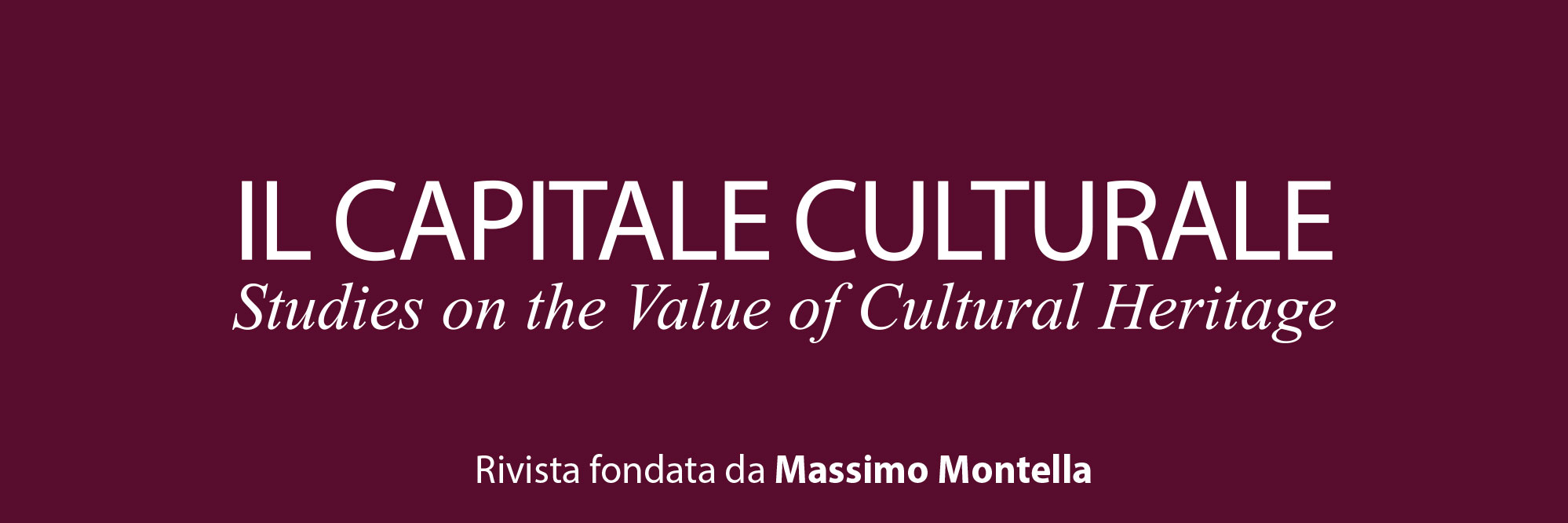A “Flood of images”. Notes on the fate of the “figure seen from behind” in the Digital Career Stories by the UniMC team
Downloads
Pubblicato
Fascicolo
Sezione
Licenza
Tutti i materiali pubblicati sono coperti da copyright, mantenuto dall'Università di Macerata che ne supporta finanziariamente e tecnicamente la pubblicazione.
La licenza adottata è la Creative Commons - Attribuzione/Condividi allo stesso modo. Ovvero, gli autori che pubblicano su questa rivista accettano le seguenti condizioni:
- Gli autori mantengono i diritti sulla loro opera e cedono alla rivista il diritto di prima pubblicazione dell'opera, contemporaneamente licenziata sotto una Licenza Creative Commons - Attribuzione che permette ad altri di condividere l'opera indicando la paternità intellettuale e la prima pubblicazione su questa rivista.
- Gli autori possono aderire ad altri accordi di licenza non esclusiva per la distribuzione della versione dell'opera pubblicata (es. depositarla in un archivio istituzionale o pubblicarla in una monografia), a patto di indicare che la prima pubblicazione è avvenuta su questa rivista.
- Gli autori possono diffondere la loro opera online (es. in repository istituzionali o nel loro sito web) prima e durante il processo di submission, poiché può portare a scambi produttivi e aumentare le citazioni dell'opera pubblicata.
DOI:
https://doi.org/10.13138/2039-2362/3142Abstract
The paper analyses the way in which UniMC students have used personal photos for the preparation of their Digital Career Stories during a workshop held in Macerata in January 2022. The phrase “flood of images” expresses the freedom with which students have used numerous photographs taken during their leisure time and travels. In this “flood of images” we can notice a predominant presence of a powerful image, which is recurrent in almost all the stories: it is based on the theme of a human being seen from behind, showing his/her back to the observer. In some images the protagonist (or the protagonists) is looking at an amazing landscape, while in other cases he/she is admiring a framed picture, a work of art in a museum. The figure of a human being seen from behind could be an effect of the significant impact of some Friedrich’s paintings (also in the European handbook of general history, literature, and art history). Within the frame of the “visual studies” (and using Mitchell, Freedberg, Lester and Belting categories), the paper deals with a singular case of the “power of images”.
Riferimenti bibliografici
Belting H. (2005), Image, Medium, Body. A new Approach to Iconology, «Critical inquiry», 31, n. 2, pp. 302-319.
Boehm G. (1994), Die Wiederkehr der Bilder, in Was ist ein Bild?, edited by G. Boehm, München: Fink, pp. 11-38.
Börsch-Supan H. (1976), L’opera completa di Friedrich, Milano: Rizzoli.
Capriotti G. (2018), Visual Communication between Art History and Visual Studies. The Power of Images with Messages before and after Paul Martin Lester, in Visuality from Intercultural Perspectives. Technologies of Imaging in Communication, Art and Social Science, edited by M. Fleming, A. Łukaszewicz Alcaraz, Szczecin: Academic Publishing House of the Faculty of Painting and New Media, Academy of Art, pp. 24-40.
Freedberg D. (1989), The Power of Images. Studies in the History and Theory of Response, Chicago: University of Chicago Press.
Koerner J.L. (2009), Caspar David Friedrich and the Subject of Landscape, London: Reaktion Books Limited.
Lee Rubin P. (2018), Seen from Behind. Perspectives on the Male Body and Renaissance Art, New Haven-London: Yale University Press.
Lester P.M. (2011), Visual Communication. Images with Messages, Belmont, CA: Wadsworth.
Marino G. (2015), Semiotics of Spreadability: A Systematic Approach to Internet Memes and Virality, «Punctum», 1, n. 1, pp. 43-66.
Mitchell W.J.T. (2012), Cloning terror. La guerra delle immagini dall’11 settembre a oggi, Firenze-Lucca: La casa Usher.
Mitchell W.J.T. (2014), Four fundamental concepts of image science, «Ikon. Journal of iconographic studies», n. 7, pp. 27-32.
Toscano B. (2006), Il museo e la sconfitta dei contesti, in Scritti brevi sulla storia dell’arte e sulla conservazione, San Casciano V.P.: LibroCo, pp. 339-355.




